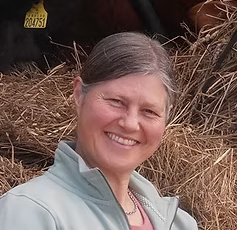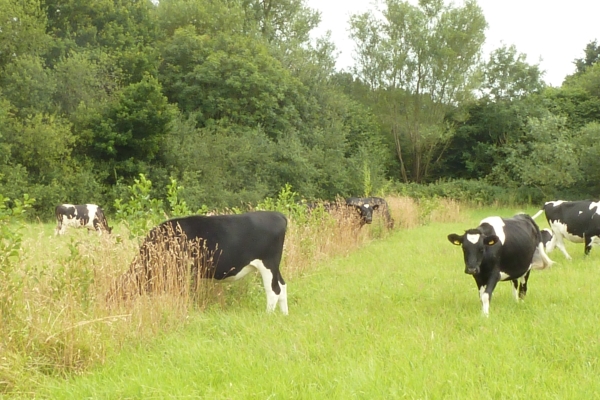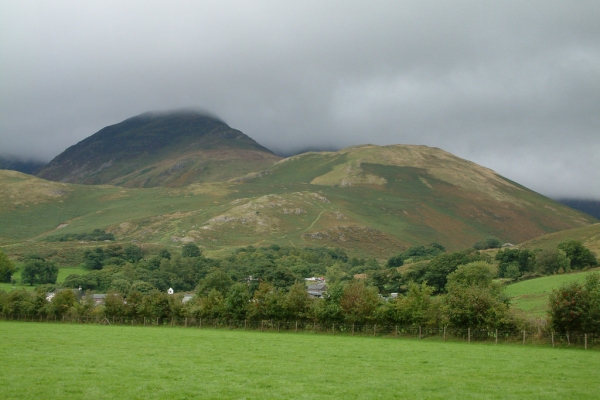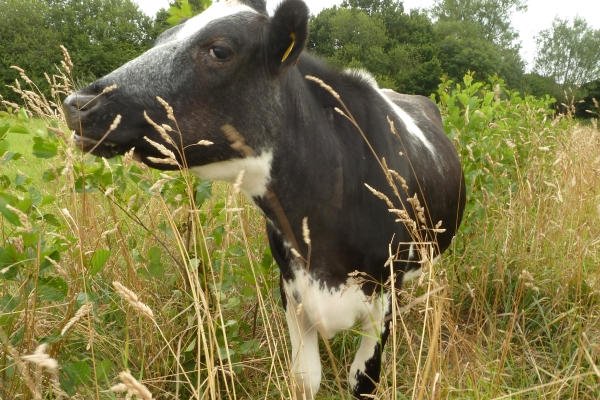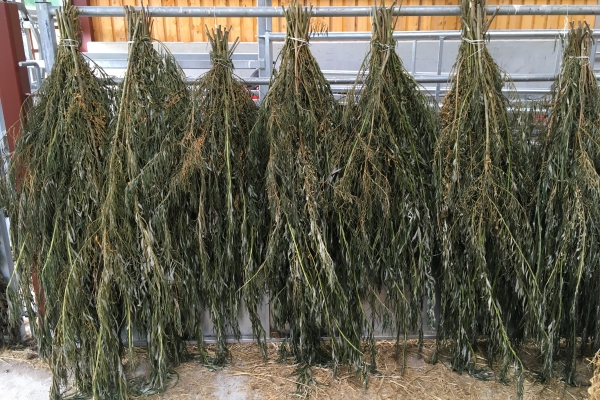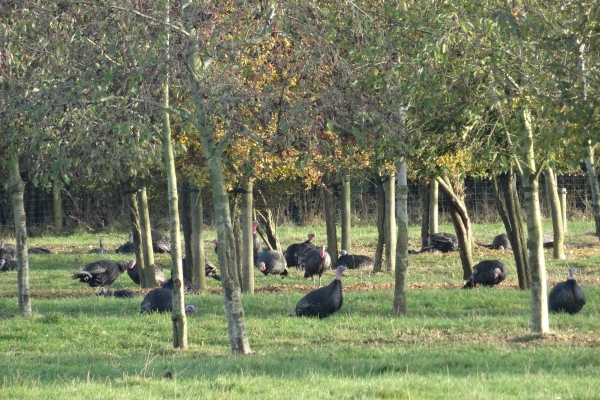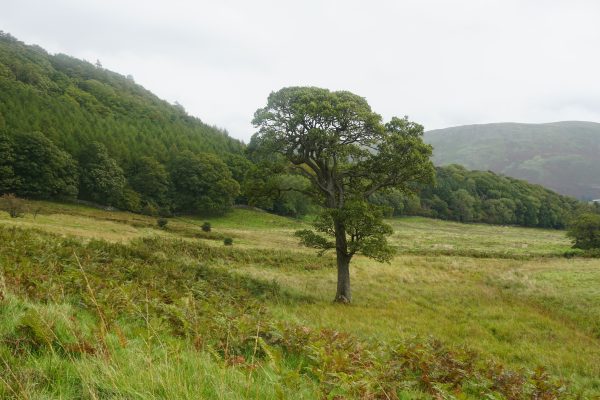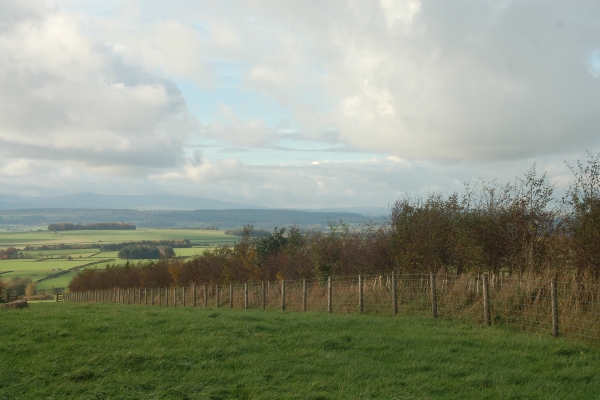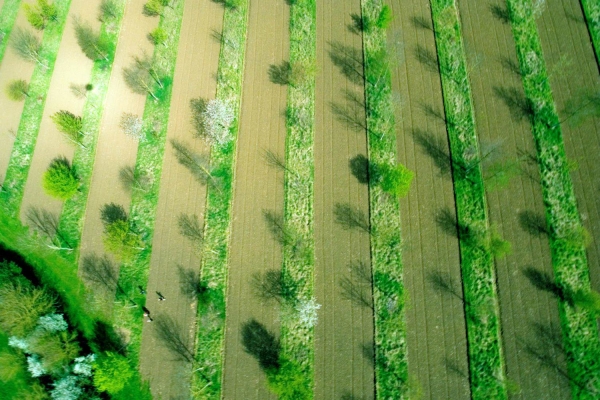Optimum shelterbelts: right tree, right place
We all know about the benefits of trees on farms. However, there are still questions about balancing functionality and productivity of farmed land with these benefits to ensure ‘right tree, right place.’ Shelterbelts are an established linear pattern of planting trees for a specific goal, i.e., slowing down wind, but currently (in England) the only funded option is a 10-metre shelter wood. By halving the width to five metres, with careful design and management, a range of benefits, beyond shelter, can be built into the landscape whilst reducing land taken out of food production.
Since 2021, the Organic Research Centre (ORC) has been part of the Optimum Shelterbelts (OSB) project which aims to characterise shelterbelts and their effects through participatory in-field trials, bringing together tree suppliers, landowners, wildlife and woodland consultants and researchers to establish long-term studies that produce knowledge and support for a wider audience. ORC work has been funded by the Dulverton Trust. The wider project has also received funding from FWAG-SW, The Woodland Trust, Great Western Community Forest, Cotswold National Landscape, and Protect Earth.
Much research has been done to model the potential benefits from planting trees to form a barrier behind which livestock and crops can be protected from extreme weather including wind, sun and rain. Less research, however, has been done into how this translates into practice, particularly in UK conditions. At the same time, research trials typically focus on single themes, for example, lamb survival or carbon sequestration, whilst here, several themes are being investigated within the same timeframe. Doing this helps our understanding of the impacts of the shelterbelt within and between each theme over time.
The OSB Project Consortium consists of the Farm and Wildlife Advisory Group – South West (FWAG-SW), the Tree Shop, a Forestry Consultant, ORC and 12 participating farmers in the Cotswolds. A uniting focus is a commitment to understanding how to optimise landscape management and care alongside responsible food production. The research element is key to identifying best practice within and between the themes to support farmers in making informed management decisions.
The OSB consortium have now completed the initial establishment and protocol design phase. Eighteen different tree species were included in the OSB design with six species each of shrubs, intermediates and tall trees selected for their leaf distribution and density considered likely to create the desired sloping profile and levels of porosity as well as food and habitat for wildlife. The first OSBs were planted in 2020/21 planting season and over this last winter (2023/24) beating up (replacing dead trees) has been completed.

The protocols developed by ORC for robust data collection include crop production, animal welfare, microclimate, biomass carbon and biodiversity. We incorporated a range of approaches including data collected by technology, researcher, farmer and volunteer activity. The aim was to devise methods which will not only deliver an increase in understanding of how OSBs impact the farmed and natural landscape across the themes, but to also support farmers in their management practices, (e.g. a method for measuring available shelter), minimising researcher activity (where possible) and optimising farmer autonomy in the long term. The intention is, where appropriate, to develop guidance material from the data collected e.g. best practice management guidelines for farmers to maintain optimal porosity and shelter as the OSBs mature. Alongside the themes addressed by ORC protocols, soil carbon (FWAG-SW) and the economic impacts (David Lewis) will also be measured.
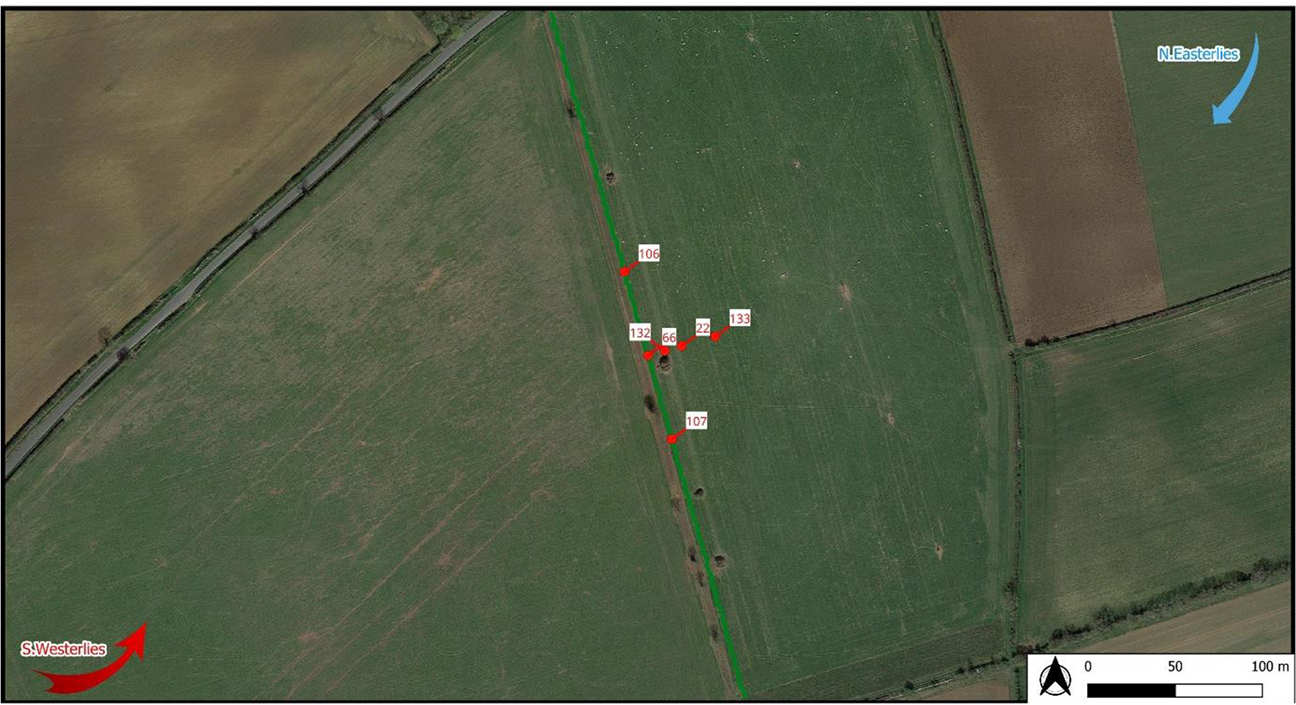
The establishment, protection and maintenance work of the OSB project continues with FWAG-SW and the Tree Shop fundraising for these activities. For the research element, the next step is to trial each protocol on farm and to identify the modifications and on-farm management required. Further data collection and refinements – subject to procurement of equipment – will help ensure the accuracy and reliability of long-term data collection. The results will be an important resource both for trial farmers and the wider farming community seeking to carry out best practice at both farm and landscape levels to optimise benefits for crops and animals in the farmed landscape and for wider ecological health.
Final report for Dulverton Trust: April 2024


